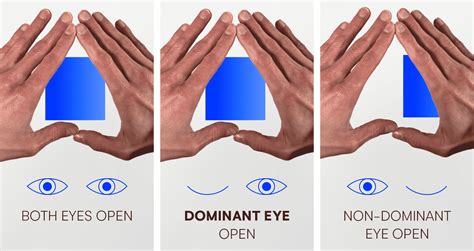LOP and Eye Dominance: Achieving Perfect Alignment for Sharper Shots
For shooters, aligning the Line of Pull (LOP) with their dominant eye is crucial for accuracy and consistency. A mismatched LOP can lead to frustration, poor performance, and even injury. Understanding both concepts and how to achieve perfect alignment is key to unlocking your shooting potential. This comprehensive guide explores LOP, eye dominance, and the strategies to ensure they work harmoniously.
What is Line of Pull (LOP)?
The Line of Pull (LOP) refers to the straight line extending from the shooter's shoulder, through the gun's stock, and to the target. It's the path the recoil force travels through the shooter's body. An improperly adjusted LOP can cause the gun to mount unevenly, leading to missed shots and discomfort. A correctly adjusted LOP ensures smooth recoil management and consistent aim. This is especially important for long-range shooting or scenarios requiring rapid follow-up shots. Factors like stock length, comb height, and even the shooter's posture influence LOP.
What is Eye Dominance?
Eye dominance refers to the eye that naturally takes the lead when focusing on an object. Most people are either right-eye or left-eye dominant, although some individuals are cross-dominant (meaning their dominant eye is opposite their dominant hand). Determining your eye dominance is critical for proper shooting technique. An incorrectly aligned dominant eye relative to the firearm's sights can significantly impact accuracy. Using your non-dominant eye to aim can lead to consistent misses, even with perfect technique in other aspects of shooting.
How to Determine Your Eye Dominance?
Several simple tests exist to determine your eye dominance:
- The Hole-in-the-Hand Test: Extend your arm forward and create a small hole with your hand. Focus on a distant object through the hole. Close one eye at a time. The eye through which you continue to see the object clearly is your dominant eye.
- The Pointing Test: Extend your arm and point at a distant object. Close one eye at a time. The eye that stays aligned with your target is your dominant eye.
How Does LOP Affect Eye Dominance in Shooting?
The relationship between LOP and eye dominance is paramount. If your LOP isn't properly aligned with your dominant eye, you'll experience difficulties in aiming consistently. This misalignment can manifest as:
- Consistent misses to one side: This is a classic sign of eye dominance issues. The gun might be pointed correctly according to your non-dominant eye, but your dominant eye sees the target elsewhere, leading to inaccuracy.
- Strain and discomfort: Fighting against your natural eye dominance causes muscle strain in your neck, shoulders, and eyes. This leads to fatigue and reduces overall shooting performance.
- Difficulty acquiring the target: Finding and holding the target consistently becomes a struggle when your dominant eye is not aligned with the gun's sight picture.
Adjusting LOP to Match Your Eye Dominance
Adjusting your LOP to match your eye dominance often requires adjustments to your firearm's stock. Several options exist:
- Adjustable Stock: Many modern firearms offer adjustable stocks allowing you to fine-tune the length of pull and comb height. Experiment with different settings until you find the optimal position for your dominant eye.
- Stock Pads: Adding or removing stock pads can modify the length of pull. This is a more affordable option than replacing the stock entirely.
- Comb Raising: Increasing the height of the stock's comb (the raised part where your cheek rests) can help align your eye with the sights. This is often accomplished with specialized comb risers.
What if My Dominant Eye and Shooting Hand Are Opposite?
Cross-dominance presents a unique challenge. Many shooters adapt by consistently using their dominant eye, even if it requires repositioning their shooting hand or body. Others use specialized shooting techniques or adapt their firearm setup to accommodate the cross-dominance. This might involve using a different type of sight or employing specific aiming techniques.
How to Achieve Perfect Alignment?
Achieving perfect alignment is an iterative process. It involves:
- Determining your dominant eye: Use the tests described above.
- Assessing your current LOP: Shoot at a target and analyze your point of impact. Consistent misses to one side indicate a misalignment.
- Adjusting your firearm: Make incremental changes to your stock length, comb height, or use accessories to bring your dominant eye into proper alignment with the sights.
- Practice: Once adjustments are made, practice consistently to solidify muscle memory and refine your shooting technique.
Frequently Asked Questions
How do I know if my LOP is too long or too short?
If you experience discomfort, bruising, or inconsistent accuracy, your LOP might be improperly adjusted. A too-long LOP can lead to flinching and inaccurate shots. Conversely, a too-short LOP can cause discomfort and hinder your ability to maintain a proper cheek weld.
Can I adjust my LOP myself, or should I seek professional help?
Simple adjustments like adding a recoil pad are usually manageable at home. More complex modifications, such as stock alterations, are best left to a qualified gunsmith.
Are there any exercises to improve eye-hand coordination for better alignment?
Dry firing practice, focusing exercises, and target practice at various distances all help to improve eye-hand coordination.
By understanding the relationship between LOP and eye dominance, and by implementing the strategies outlined here, you can significantly improve your shooting accuracy and consistency. Remember, patience and practice are key to achieving perfect alignment and unlocking your shooting potential.

